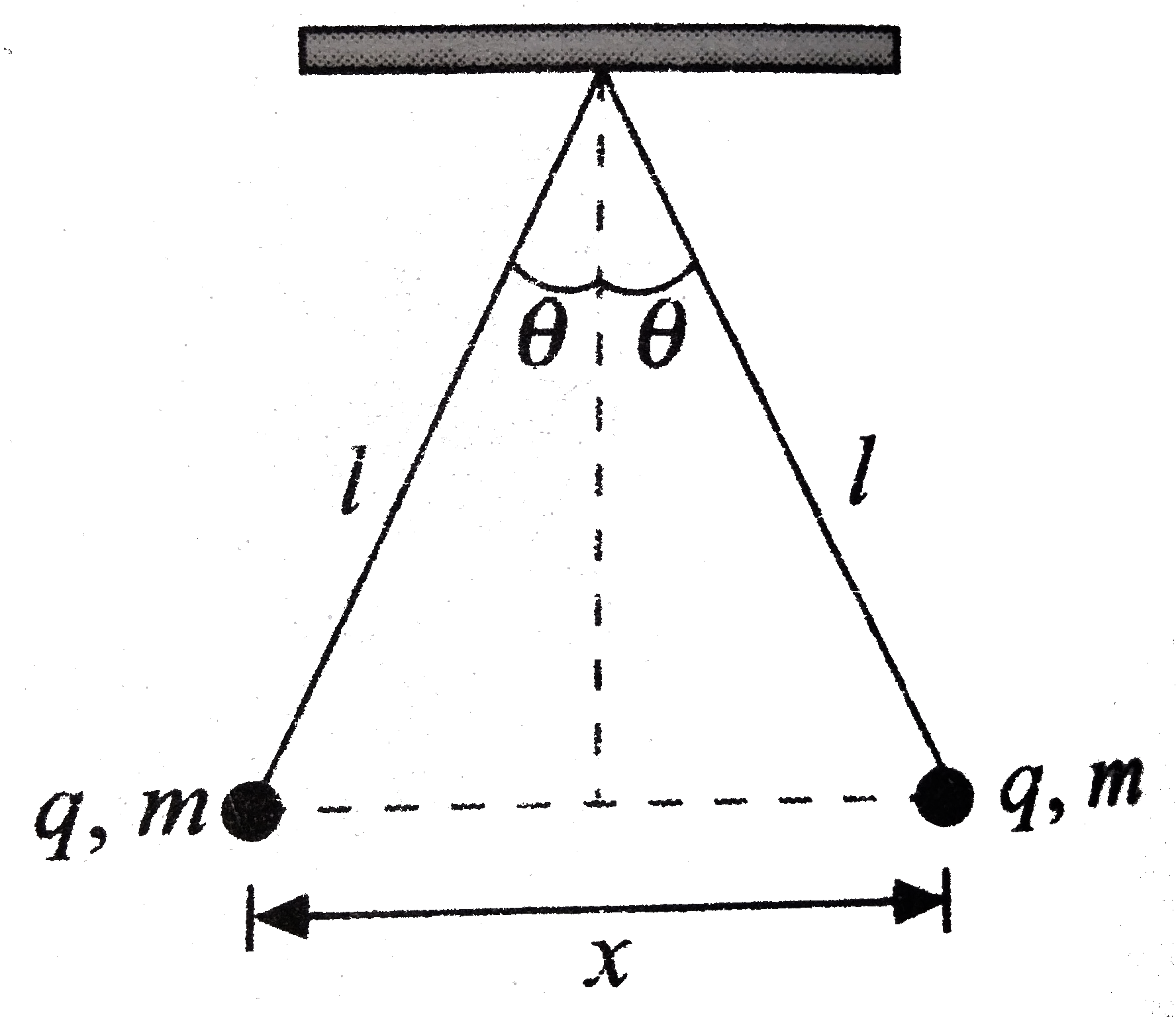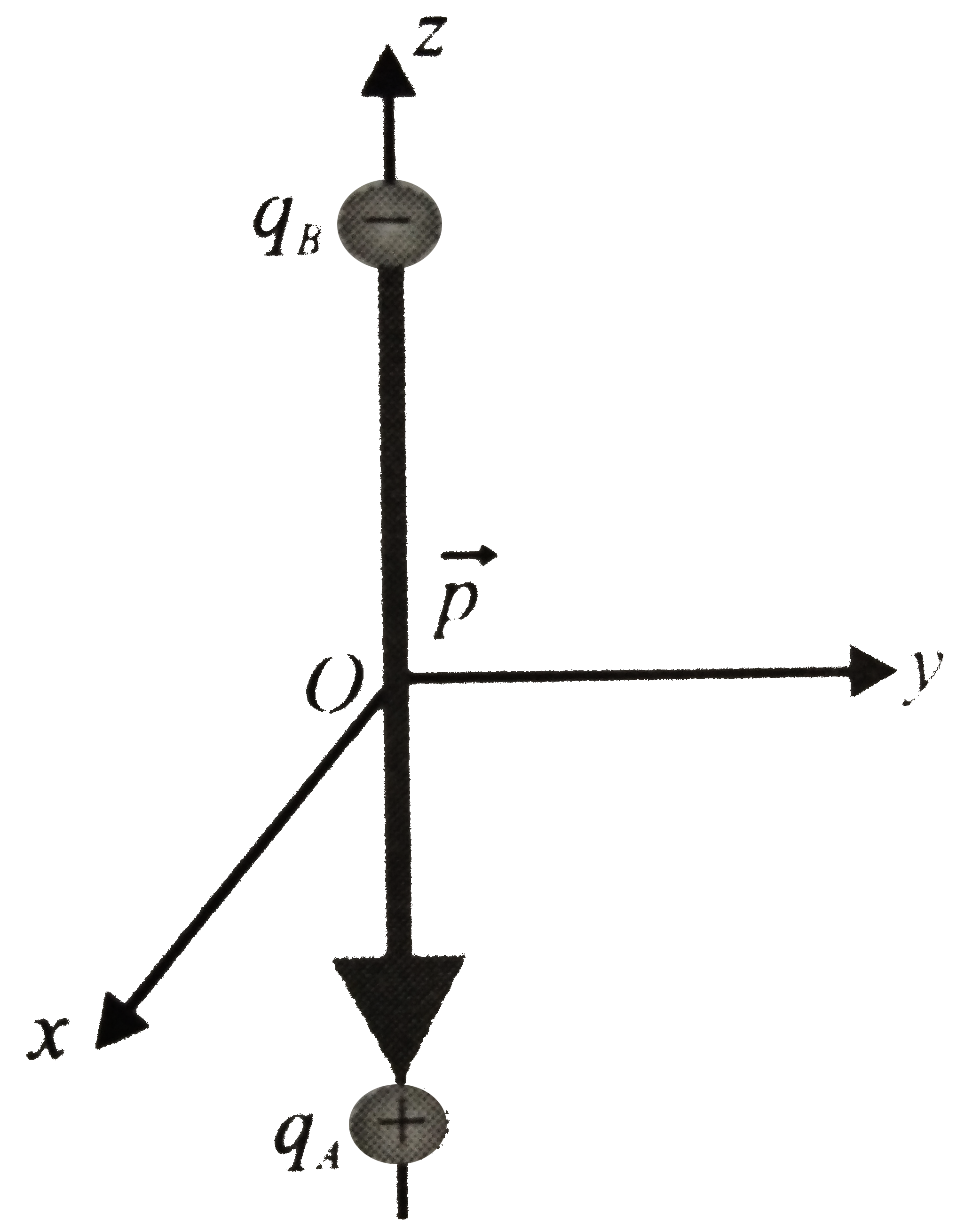Complete Solutions to Example of chapter ELECTROSTATIC FORCES, CHARGES AND FIELDS of Class 12 book with complete answers and questions
| Class 12 | PHYSICS |
| Chapter | ELECTROSTATIC FORCES, CHARGES AND FIELDS |
| SL ARORA | Example |
| Number Of Questions | 44 |
| Academic Year | 2023-24 |
Which is bigger, a coulomb or charge on an electron ? How many electronic charges from one coulomb of charge ?
01:15View SolutionA person combs his hair on a dry day. The comb causes `10^(22)` electrons to leave the person's hair and stick to the comb. Calculate the charge the comb carries.
01:34View SolutionA polythene piece rubbed with wool is found to have a negative charge of `3.2xx10^(-7)`C (i) Estimate the number of electrons transferred. (ii) Is there a transfer of mass from wool to polythene ?
04:18View SolutionIt is now believed that protons and neutrons (which constitute nuclei of ordinary matter) are themselves built out of more elementary units called quarks. A proton and a neutron consist of three quarks each. Two types of quarks , the so called 'up' quark, (denoted by U) of charge `+ (2//3)` e and the 'down' quark (denoted by d) of charge `(-1//3)` e together with electrons build up ordinary matter. (Quarks of each other types have also been found which give rise to different unusual varieties of matter). Suggest a possible quark composition of a proton and neutron.
05:32View SolutionIn a Millikan's oil drop experiment, six oil drops were observed to have charges of `16xx10^(-19) C`, `8.0xx10^(-19)`C, `6.4xx10^(-19)` C, `2.4xx10^(-18)`C and `3.2xx10^(-18)` C, respectively. What conclusion can be drawn from these observations ?
04:28View SolutionWhat is the Coulomb's force between two `alpha`-particles separated by a distance of `3.2xx10^(-15) m`.
01:32View SolutionThe electrostatics force of repulsion between two positively charged ions carrying equal charge is `3.7xx10^(-9)N` when these are separated by a distance of `5Å`. How many electrons are missing from each ion?
02:34View SolutionCalculate the distance between two protons such that the electrical repulsive force between them is equal to the weight of either.
04:23View SolutionA pith-ball A of mass `9xx10^(-5)` kg carries a charge of `5 mu `C. What must be the magnitude and sign of the charge on a pith-ball B held 2 cm directly above the pith-ball A, such that the pith-ball A remains stationary ?
05:53View SolutionThe distance between the electron and proton in hydrogen atom is `5.3xx10^(-11)` m. Determine the magnitude of the ratio of electrostatic and gravitational force between them. Given `m_(e)=9.1xx10^(-31)` kg, `m_(p)=1.67xx10^(-27) ` kg, `e=1.6xx10^(-19) C " and " G=6.67xx10^(-11) Nm^(2) kg^(2)`.
05:09View SolutionTwo particles, each having a mass of 5 g and charge. `1.0 xx 10^(-7)` C, stay in limiting equilibrium on a horizontal. table with a separation of 10 cm between them. The coefficient of friction between each particle and the table. is the same. Find the value of this coefficient.
03:04View Solution(a) Two insulated charged copper spheres A and B have their centers speparated by a distance of 50 cm. What is the mutal force of electrostatic repulsion if the charge on each is `6.5xx10^(-7) C` ? The radill of A and B are negalible compared to the distance of separation.
(b) What is the force of repulsion if each sphere is charged double the above amount, and the distance between them is halved ?02:53View SolutionTwo identical point charges Q are kept at a distance r from each other. A third point charge is placed on the line joining the above two charges such that all the three charges are in equilibrium. The third charge
(a) should be of magnitude q=………..
(b) should be of sign .......
(c) should be placed ........ .07:03View SolutionTwo point electric charges of value `q` and `2q` are kept at a distance `d` apart from each other in air. A third charge `Q` is to be kept along the same line in such a way that the net force action on `q` and `2q` is zero. Calculate the position of charge `Q` in terms of `q` and `d`.
10:11View SolutionTwo identical conducting spheres, fixed in space, attract each other with an electrostatic force of `0.108 N` when separated by `50.0 cm`, centre-to-centre. A thin conducting wire then connects the spheres. When the wire is removed, the spheres repel each other with an electrostatic force of `0.0360 N`. What were the initial charges on the spheres?
05:09View SolutionTwo similar balls, each of mass m and charge q, are hung from a common point by two silk threads, each of length l. Prove that separation between the ball is `x=[(q^(2)l)/(2 pi epsilon_(0)mg)]^(1//3)`, if `theta` is small
Find the rate `(dq)/(dt)` with which the charge should leak off each sphere if the velocity of approach varies as `v=a//sqrt(x)`, where a is a constant.
 05:12View Solution
05:12View SolutionTwo small spheres each of mass `m` kg and charge `q` coulomb are suspended from a point by insulating threads each of `l ` length, but of negligible mass. If `theta` is the angle which each string makes with the vertical vertical when equilibrium has been reached, show that
`q^(2) = 4mg l^(2) sin^(2) theta tan theta (4pi in_(0))`03:14View SolutionTwo pith balls, each weighting 10mg are suspended from the same point by silk threads, each of length 0.25m. When equal and similar charges are placed on them they repel each other and are 10m apart. Find the charge on the each pith ball.
08:02View SolutionA charge Q is to be divided on two objects. What shouold. be the values of the charges on the objects so that the. force between the objects can be maximum?.
01:51View SolutionA charged spherical conductor has a surface charge density of `0.7C//m^(2)` .When its charge is increased by `0.44C` the charge density changes by `0.14C//m^(2)` the radius of the sphere is
03:51View SolutionSixty four spherical drops each of radius `2 cm` and carrying `5 C` charge combine to form a bigger drop. Its capacity is.
02:28View SolutionTen positively charged particles are kept fixed on the x-axis at points x=10cm, 20cm, 30cm, …, 100cm. The first particle has a charge `1.0xx 10^(-8)C`, the second `8xx10^(-8)` C, the third `27xx10(-8)`C and so on. The tenth particle has a charge `1000xx10^(-8)C.` find the magnitude of the electric force acting on a 1 C charge placed at the origin.
07:14View SolutionFour point charges `q_(A) = 2 mu C , q_(B) = -5 mu C, q_(C) = 2 mu C and q_(D) = -5 mu C` are located at the corners of a square ABCD of side 10 cm. What is the force on a charge of `1 mu C` placed at the center of the square ?
03:03View SolutionCharges of `+5 muC, +10 mu C " and " -10 mu C` are placed in air at the corners A,B and C of an equilateral triangle ABC, having each side equal to 5 cm. Determine the resultant force on the charge at A.
02:24View SolutionThree point charges are placed at the following points on the x-axis `: 2 mu C " at " x=0, -3 mu C " at " x=40 cm " and " -5 mu C " at " x=120` cm. Calculate the force on the `-3 mu C` charge.
 05:48View Solution
05:48View SolutionFour equal point harges each `16 mu C` are placed on the four corners of a square of side 0.2 m. Calculate the force on any one of the charges.
07:23View SolutionA charge of `0.33xx10^(-7) C` is brought in an electric field. It experiences a force of `1.0xx10^(-5)` N. Find the intensity of the electric field at this point.
02:46View SolutionAn `alpha`-particle is situated in an electric field of `1.5xx10^(5) NC^(-1)`. Determine the force exerted on it.
02:23View SolutionAn oil drop of mass `5xx10^(-15)` kg carries a charge Q. The drop is stationary between two parallel metal plates 25 mm apart with a p.d. of 1000 V between them. Determine Q. Take `g=10 ms^(-2)`.
05:32View SolutionAn oil drop of 12 excess electrons is held stationaty under a constant electric field of `2.55xx10^(4) NC^(-1)` in Millikan's oil drop experi,ment. The density of the oil is `1.26 g cm^(-3)`. Estimate the radius of the drop. `(g = 9.81 ms^(-2) , e = 1.60xx10^(19) C)`
03:17View SolutionAn electron is liberated from the lower of the two large parallel metal plates separated by a distance of 20 mm. the upper plate has a potential of `+2400 V` relative to the lower plate. How long does the electron take to reach the upper plate ? Take `(e )/(m)` of electrons `1.8xx10^(11) C kg^(-1)`
08:40View SolutionAn electron falls through a distance of 1.5 cm in a uniform electric field of magnitude `2.4xx10^(4) NC^(-1)` [Fig.1.12 (a)]`. The direction of the field is reversed keeping its magnitude unchagned and a proton falls through the same distance [Fig. 1.12 (b) ]. Complute the time of fall in each case. Contrast the situation (a) with that of free fall under gravity.
 07:36View Solution
07:36View SolutionA pendulum bob of mass 80mg and carrying a charge of `2xx 10^(-8)C` is at rest in a uniform, horizontal electric field of 20k `Vm^-1.` Find the tension in the thread.
03:15View SolutionAssuming that the charge on an atom is distributed uniformly is a sphere of radius `10^(-10)` m, what will be the electric field at the surface of the gold atom ? For gold, Z=79.
04:26View SolutionAn electorn is separated from the proton through a distance of 0.53 Å. Calculate the electric field at the location of the electron.
04:17View SolutionTwo point charges of `+16 muC and -9 mu C` are placed 8 cm apart in air. Determine the position of the point at which the resultant electric field is zero.
03:19View SolutionTwo equal charges of `-10^(-16)` each are kept 20 cm apart in air. Calculate :
(a) electric field at a point midway between them.
(b) force acting on a charge of `-10^(-16)` C kept at point midway between them.05:26View SolutionFour charges `+q, +q, -q, and -q` are placed, respectively, at the corners `A,B,C, and D` of a square of side `a`, arranged in the given order. `E and F` are the midpoints of sides `BC and CD`, respectively, `O` is the center of square.
The electric field at `O` is.03:39View SolutionTwo charges, one `+5 mu C` and another `-5 mu C` are placed 1 mm apart. Calculate the dipole moment.
02:31View SolutionA system has two charges `q_(A)= +2.5xx10^(-7)C and q_(B)= -2.5xx10^(-7)C` located at point A: (0,0,-15 cm)and B: (0,0,+15 cm)`, respectively. What are the total charge and electric dipole moment of the system?
 02:30View Solution
02:30View SolutionAn electrtic dipole with dipole moment `4xx10^(-9) C m` is aligned at `30^(@)` with the direction of a uniform electric field of magnitude `5xx10^(4) NC^(-1)`. Calculate the magnitude of the torque acting on the dipole .
01:22View SolutionAn electric dipole consisting of two opposite charges of `2xx10^(-6)C` each separated by a distance of `3 cm` is placed in an electirc field of `2xx10^(5)N//C`. The maximum torque on the dipole is will be
02:25View SolutionCaleulate the electric field due to an electric dipole of length 10 cm having charges of `1 mu C` at a point 12 cm from the centre of the dipole.
04:29View SolutionTwo charges `+- 10 mu C` are placed `5*0 mm` apart. Determine the electric field at (a) point P on the axis of dipole `15 cm` away from its center on the side of the positive charge. As shown in Figure and at (b) a point Q. `15 cm` away form O on a line passing through O and a line passing through O and normal to the axis of the dipole as shown in Fig.
 03:06View Solution
03:06View Solution
Example questions and complete solutions for chapter ELECTROSTATIC FORCES, CHARGES AND FIELDS of DHANPAT RAI & CO PHYSICS (HINGLISH) of Class 12
